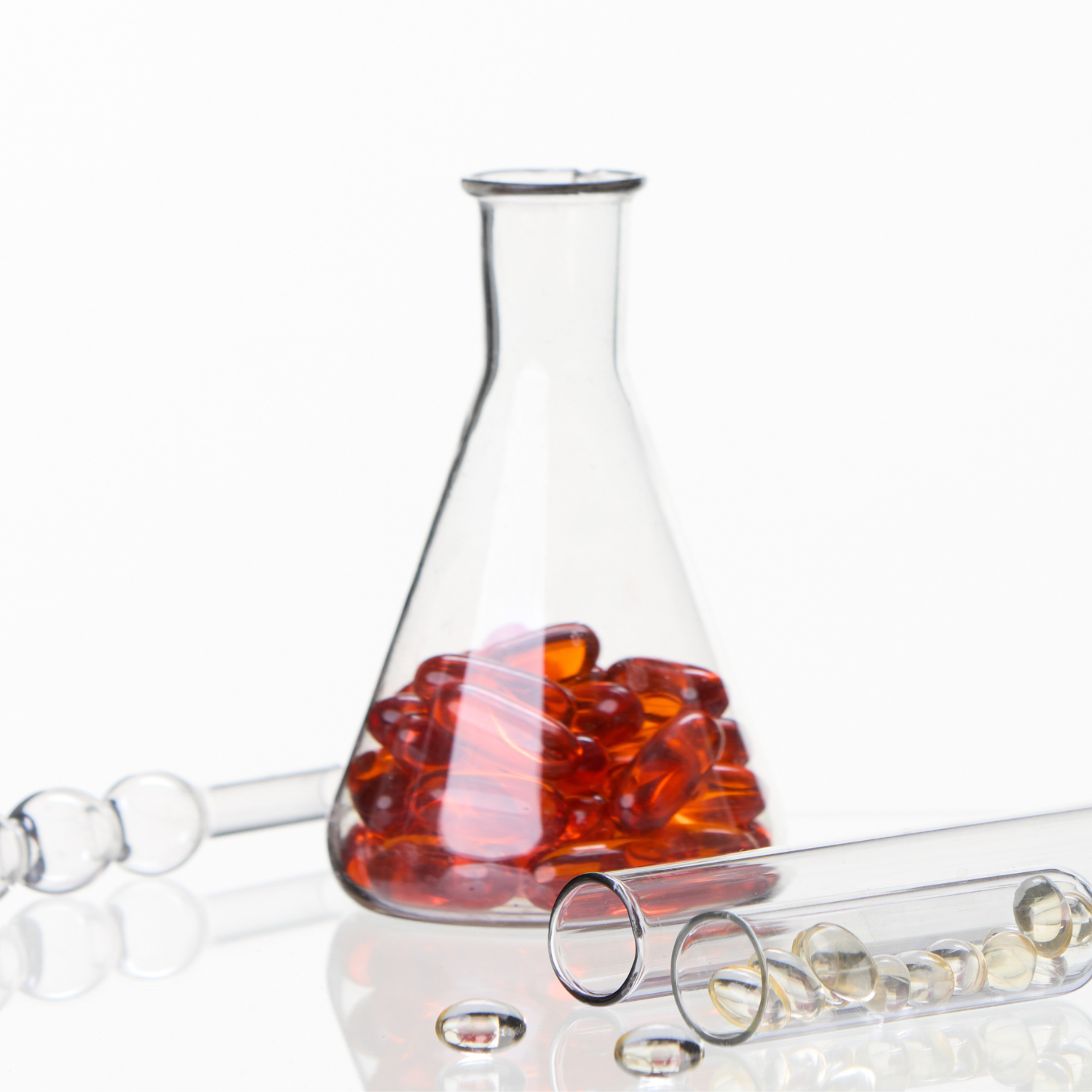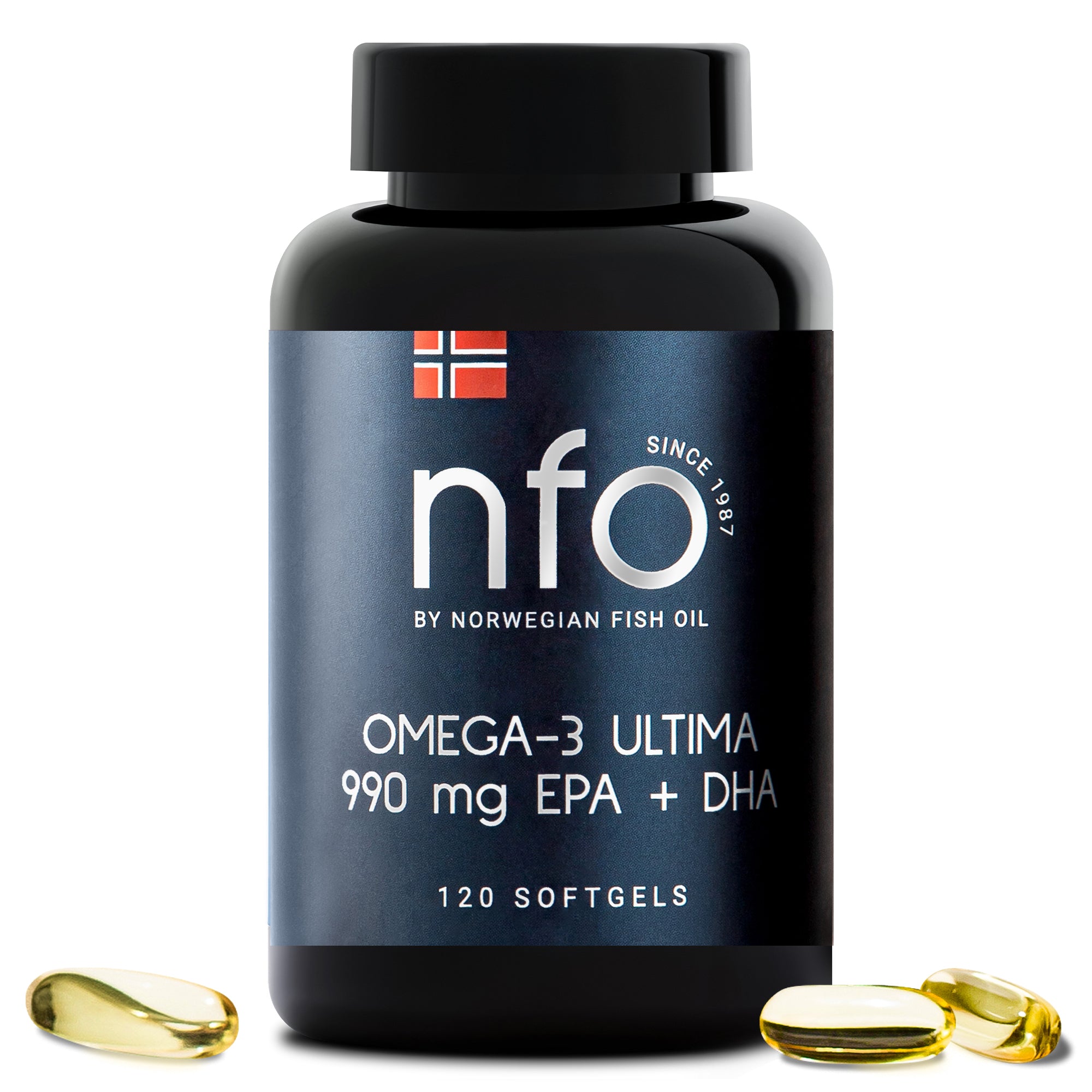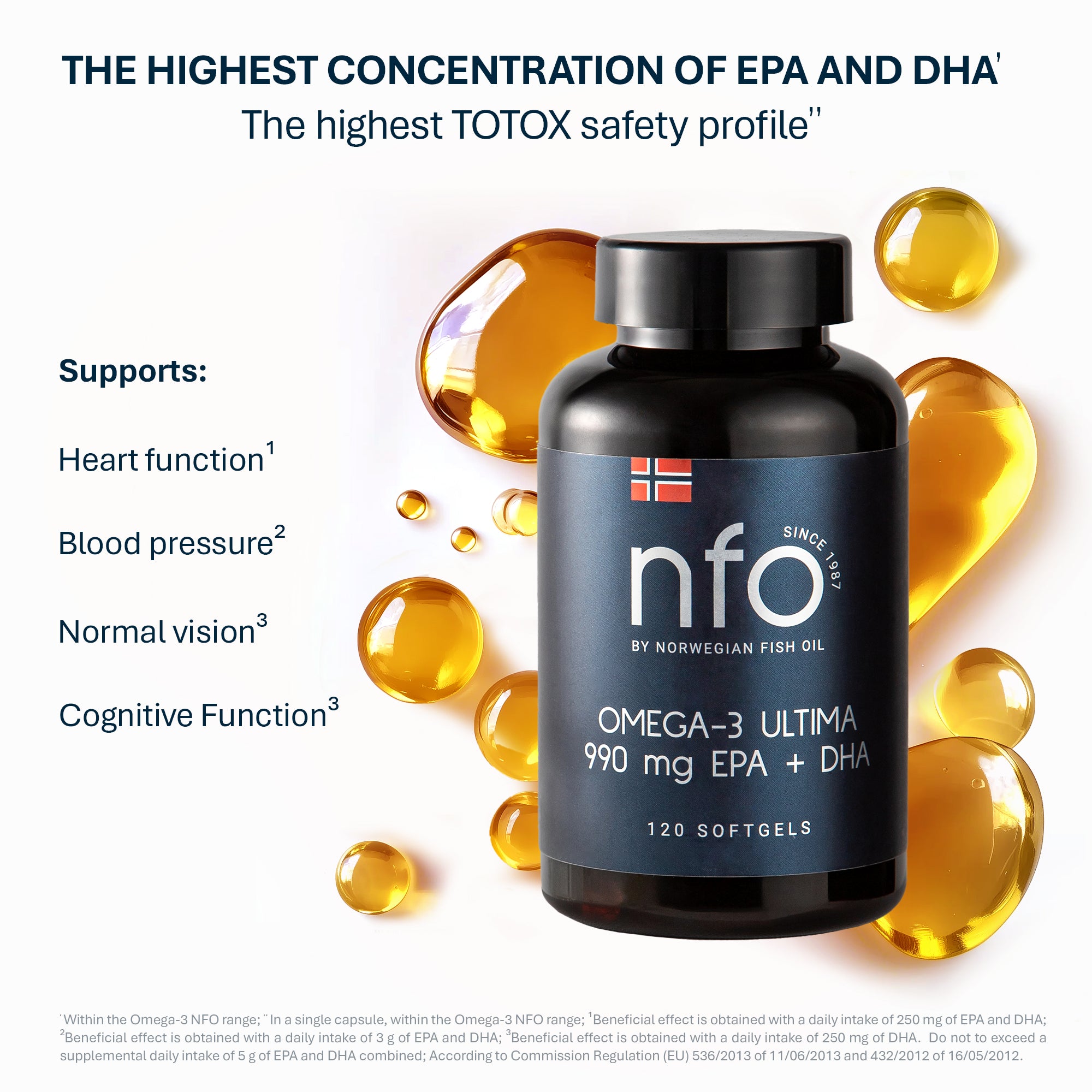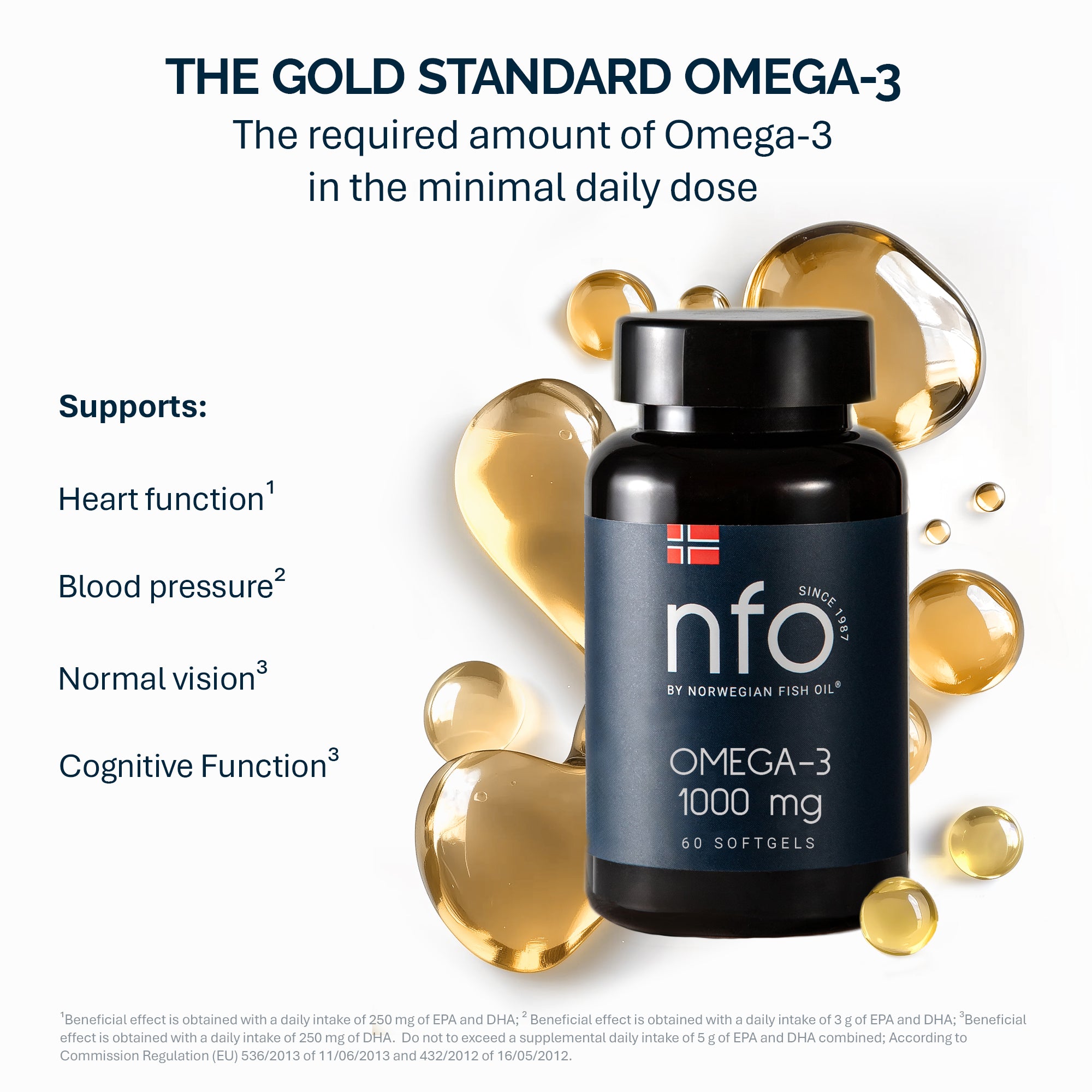If you have heard about fish oil or omega-3 supplements, you might know the terms EPA and DHA. They are two special types of omega-3 fatty acids that are crucial for our health. But what sets them apart, and why does your body need them? In this article, we will explain the differences between EPA and DHA and break down their chemical and physiological roles in plain English.
What are EPA and DHA?
EPA (eicosapentaenoic acid) and DHA (docosahexaenoic acid) are closely related omega-3 fatty acids. Omega-3s are often called "essential fats" because our bodies cannot produce enough of them on their own, meaning we must get them through the foods we eat. EPA and DHA are considered long-chain omega-3s – EPA has a 20-carbon chain and DHA has a 22-carbon chain. They primarily come from marine sources like fatty fish (such as salmon, mackerel, sardines) and fish oil supplements. In fact, fish themselves get these omega-3s by eating microalgae, which is the original source of EPA and DHA in the ocean food chain.
These structural details might sound technical, but they lead to each fatty acid having unique roles in the body. Think of EPA and DHA as siblings: they share a lot in common, but each one has its own "personality" and specialty when it comes to supporting your health.
Chemical differences
From a chemistry perspective, the difference between EPA and DHA comes down to two carbon atoms and one extra double bond. EPA is a molecule with 20 carbons and 5 double bonds, while DHA is slightly larger with 22 carbons and 6 double bonds. Double bonds are like flexible joints in the fatty acid chain – more double bonds make the molecule more bendy or fluid. So, DHA's extra length and double bond make it an especially flexible fatty acid.
Why does this matter? DHA's structure allows it to pack into cell membranes (the outer layer of our cells) and make those membranes more fluid and flexible. This is really important in places like your brain, where cells need to send signals quickly – DHA helps "oil the gears" of brain cell membranes so they can communicate better. EPA’s slightly shorter structure, on the other hand, is ideal for creating signaling molecules in the body. EPA is the main precursor for eicosanoids – hormone-like messengers that help regulate processes like inflammation, immune responses, and blood clotting. In simpler terms, DHA is built to be a structural component (especially in the brain and eyes), whereas EPA is built to be a signaling molecule that tells our body how to respond to stress or injury. Next, let us look at what each of these fatty acids does for us in everyday health.
EPA: the inflammation fighter and heart helper
Think of EPA as a calming mediator in your body. Its primary job is to produce compounds that dial down inflammation when it is not needed. Inflammation is a natural defense process – for example, it is why an infected cut gets red and puffy. But too much chronic (long-term) inflammation can damage healthy tissue and contribute to many diseases. EPA helps by creating eicosanoids, which are like tiny messenger molecules that tell your immune system and cells, "okay, calm down now" when inflammation should be reduced. By reducing excessive, systemic inflammation, EPA may lower the risk of chronic conditions that are linked to inflammation, including heart disease, arthritis, and metabolic syndrome. In essence, EPA acts a bit like a firefighter in the body, helping to put out the slow-burning "fires" of inflammation before they get out of control.
Heart health: one of the biggest reasons EPA (and omega-3s in general) gets attention is because of its heart benefits. High levels of fats in the blood (like triglycerides) and unchecked inflammation can lead to clogged arteries and heart problems. EPA helps on multiple fronts. It has been shown to lower triglyceride levels in the blood and even slightly raise HDL ("good") cholesterol, which are positive changes for cardiovascular health. EPA also helps the inner lining of blood vessels work better and makes blood less likely to clot too much. By keeping inflammation in check and improving these risk factors, EPA contributes to a lower chance of developing atherosclerosis (plaque buildup in arteries that can lead to heart attacks and strokes). It is no surprise that diets rich in omega-3 (like diets high in fatty fish) are associated with healthier hearts, and fish oil supplements high in EPA have been used to help manage triglycerides and heart risk.
Mood and mental health: interestingly, EPA seems to play a special role in the brain when it comes to mood and mental health. Several studies have found that omega-3 supplements with a higher proportion of EPA can help improve symptoms of depression, whereas DHA-heavy formulations did not show the same benefit. Researchers think this might be because EPA helps reduce neuro-inflammation (inflammation in the brain) and influences neurotransmitters (the chemical messengers between brain cells) in a way that stabilizes mood. In plain terms, EPA might help the brain by creating an anti-inflammatory environment and supporting the chemicals that affect how we feel. This does not mean DHA is not important for the brain (it definitely is, as we will see next), but it shows that EPA has a unique impact on mood regulation and perhaps conditions like depression. Some have nicknamed EPA the "mind-body omega-3" because of its combined effects on inflammation and mental well-being.
DHA: the brain booster and eye protector
If EPA is the inflammation fighter, DHA is the master builder – especially for your brain and eyes. DHA is a critical structural component of cell membranes in the nervous system. In fact, it is the most abundant omega-3 fatty acid in the human brain, comprising a significant portion of the polyunsaturated fats in the brain's gray matter. To give you an idea,
...about 40% of the polyunsaturated fatty acids in the brain are DHA, and in the eye's retina DHA makes up about 60% of the polyunsaturated fats.
This means your brain and eyes literally rely on DHA as building material. DHA's presence in cell membranes helps keep those membranes fluid and flexible, which is crucial for brain cells (neurons) to communicate effectively. You can think of DHA as the "oil" that keeps the brain's machinery running smoothly. When cell membranes are fluid (not stiff), signals can pass quickly, and receptors on cells can do their jobs properly. This supports cognitive functions like learning, memory, and focus. In the eyes, DHA is important for the rods and cones in the retina (the cells responsible for vision) to function and maintain healthy eyesight.
Brain development and cognition: DHA is especially important during developmental stages. Before birth and during childhood, a lot of DHA is needed to build the growing brain and eye tissue. That is why pregnant women are often encouraged to get enough DHA – it helps the fetus's brain and eyes develop properly. Studies have shown that babies whose mothers had higher DHA intake tend to have better cognitive function, problem-solving skills, and even hand-eye coordination as they grow. Adequate DHA during pregnancy has also been linked to better visual acuity (sharpness of vision) in infants. But DHA's benefits do not stop in childhood. Throughout life, getting enough DHA continues to support the brain. For example, young adults who take DHA supplements have shown improvements in memory. In older adults, maintaining higher DHA levels (often through diet or supplements) has been associated with stronger cognitive function and could potentially contribute to a lower risk of neurodegenerative issues like dementia. In one review, elderly individuals performed better on certain brain function tests after DHA supplementation. Essentially, DHA helps "future-proof" the brain to some extent – building it up during development and helping preserve its function in aging.
Other health roles of DHA: while DHA is famous for brain and eye health, it also aids the body in other ways. For instance, DHA appears to support heart health by helping to lower blood pressure and resting heart rate. One study found that DHA supplementation led to a more significant reduction in blood pressure compared to EPA supplementation. Like EPA, DHA has anti-inflammatory effects, but it works a bit differently. DHA can be turned into compounds called resolvins and protectins, which are like peacekeepers that help resolve inflammation once it has done its job. In other words, if EPA is good at preventing the fire of inflammation, DHA helps in the aftermath by clearing out the smoke and debris. Research has shown that DHA can deactivate the body's inflammatory response by producing these resolving molecules. This not only protects the brain (where chronic inflammation can be harmful) but also benefits overall health. For example, adequate DHA intake has been linked to a reduced risk or slower progression of certain degenerative conditions like age-related macular degeneration (AMD), an eye disease that affects older adults. DHA's support for retinal health and its anti-inflammatory action likely contribute to this protective effect on vision as we age.
Do we need both EPA and DHA?
With the different benefits of EPA and DHA outlined, a smart question to ask is: do we really need both of these omega-3s? Or is one more important?
The short answer: we need both.
Our bodies evolved to use both EPA and DHA, and they complement each other in keeping us healthy. While they share some overlapping benefits (both help the heart, both are good for the brain, both reduce inflammation), they each also have unique strengths.
One way to appreciate their partnership is to look at how they handle inflammation together. A recent study in older adults compared EPA-only vs DHA-only supplements and found that DHA was more powerful in directly reducing several markers of inflammation, whereas EPA had a weaker direct effect. However, EPA excelled in a different way: it improved the balance between pro-inflammatory and anti-inflammatory signals in the immune system. In plain terms, DHA helped lower the volume of the body's inflammation alarm bells, and EPA helped ensure the tone of the immune response was balanced and not overreacting. This suggests that each fatty acid contributes differently to controlling inflammation – DHA acting as a strong suppressor of inflammatory signals, and EPA acting as a balancer or fine-tuner of the immune response. Both roles are valuable for keeping inflammation in check, so having both EPA and DHA is like having two types of specialists on a team tackling inflammation from different angles.
We see a similar pattern in other areas of health. In the brain, DHA provides the physical support for brain cells (structure and fluidity) and is key for vision and cognition, while EPA, though present in smaller amounts in the brain, helps by influencing mood and inflammatory status in the brain. In the cardiovascular system, EPA might edge out DHA in lowering triglycerides, but DHA might be a bit better at lowering blood pressure – together, they both contribute to a healthier blood lipid profile and blood vessel function. In fact, many studies and clinical trials use combined EPA+DHA (like in fish oil) and have found benefits such as reduced risk of heart attacks and strokes. It is partly for this reason that organizations like the American Heart Association recommend people (especially those with heart concerns) consume omega-3s from fish or supplements – because EPA and DHA together have been linked to cardiovascular protection.
To sum it up, EPA and DHA are partners, not competitors. Your body uses DHA as a fundamental nutrient for building brain, eye, and cell structures, and uses EPA to regulate inflammation and support circulatory and immune balance. For optimal health, especially if you are a health enthusiast looking to support everything from your heart to your brain, it is wise to ensure you get both of these omega-3s in your diet. Typically, eating oily fish like salmon a couple of times a week can provide a good mix of EPA and DHA, and high-quality fish oil or algae-based supplements also often contain a balance of both. Since our bodies cannot make sufficient EPA and DHA on their own, getting them through diet is the only practical way to maintain their levels.
The bottom line
EPA and DHA may sound like complicated chemical names, but they have simple and profound impacts on human health. In summary, EPA (20:5) is the omega-3 that helps put out fires of inflammation and supports heart health and mood, while DHA (22:6) is the omega-3 that builds up our brain, eyes, and keeps our cognitive functions strong. Explaining their importance in simple terms comes down to this: one helps keep our body running smoothly by reducing unnecessary inflammation, and the other helps build and maintain key parts of our body (like the brain). Both are essential pieces of the puzzle for a healthy human being.
Modern research continues to uncover new details about how EPA and DHA benefit us, but thousands of studies already show that getting enough of these fatty acids is linked to better health outcomes across the lifespan. So, whether you are interested in improving your heart health, boosting your brain function, or just supporting overall wellness, remember that EPA and DHA are a dynamic duo working together to keep you at your best. Ensuring you have both in your diet is one of the best-supported nutrition tips for long-term health. In the end, the difference between EPA and DHA is what makes each uniquely valuable – and together, they help our bodies thrive.
Sources:
-
Everlywell – EPA vs. DHA in Fish Oil and Omega-3 Fatty Acids
-
NIH Office of Dietary Supplements – Omega-3 Fatty Acids Fact Sheet
-
Swolverine – EPA vs DHA: Key Differences and Benefits
-
Cleveland Clinic – Omega-3 Fatty Acids and Health Benefits
-
Tufts University (Now) – Study on EPA and DHA in Inflammation



















